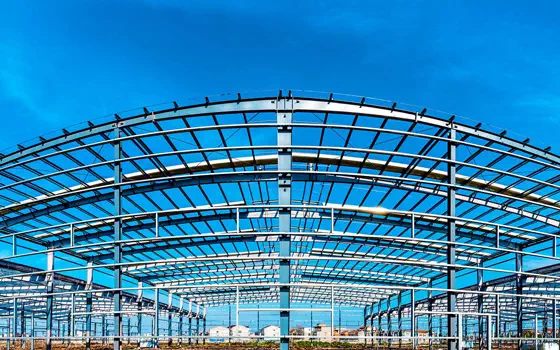Welcome to Shandong Zhishang Steel Co., Ltd.
Get a free quote quickly!
Lorem ipsum dolor sit amet, consectetur adipiscing elit. Donec id erat sagittis, faucibus metus malesuada, eleifend turpis. Mauris semper augue id nisl aliquet, a porta lectus mattis. Nulla at tortor augue. In eget enim diam. Donec gravida tortor sem, ac fermentum nibh rutrum sit amet. Nulla convallis mauris vitae congue consequat. Donec interdum nunc purus, vitae vulputate arcu fringilla quis. Vivamus iaculis euismod dui.
Structural steel
(1) Structural steel for construction and engineering is referred to as construction steel, which refers to the steel used to make metal structural parts on buildings, Bridges, ships, boilers or other projects. Such as carbon structural steel, low alloy steel, reinforced steel and so on.
(2) Structural steel for mechanical manufacturing refers to steel used to manufacture structural parts on mechanical equipment. This kind of steel is basically high-quality steel or high quality steel, mainly high-quality carbon structural steel, alloy structural steel, easy to cut structural steel, spring steel, rolling bearing steel and so on.
Generally used to manufacture a variety of tools, such as carbon tool steel, alloy tool steel, high-speed tool steel and so on. According to the use can be divided into cutting tool steel, die steel, measuring steel.
Special steel
Steel with special properties, such as stainless acid-resistant steel, heat-resistant non-peeling steel, high resistance alloy, wear-resistant steel, magnetic steel, etc.
Specialty steel
This refers to the professional use of steel in various industrial sectors, such as automotive steel, agricultural machinery steel, aviation steel, chemical machinery steel, boiler steel, electrical steel, welding rod steel and so on.
Exposed structural steel refers to the structural form that keeps the details of steel structure and its joints visible under the premise of meeting the quality requirements of steel structure in the building.
What are the requirements of the AESS standard for the processing of steel profiles?

1. No steel mill rolling trademarks, steel marks or raised marks are allowed;
2. It is forbidden to lift steel and components with bite printing;
3. During assembly, it is forbidden to weld temporary support on the exposed surface of components, and it is forbidden to hammer;
4. Minimum weld exposure;
5. the butt weld width is consistent, straight, and polished to flush with the base material, weld residual height is zero;
6. grinding along the weld length direction, the vertical direction of grinding is easy to lower than the base metal surface;
7. After shot blasting or sandblasting, the visible defects shall be welded and filled or polished to remove the defects.
The chemical composition and mechanical properties of 12Cr1MoV alloy structural steel are excellent, the tensile strength and yield point are above the standard, but also has high plasticity and oxidation resistance. It is widely used in high pressure, ultra high pressure, subcritical superheater, collecting box and main steam conduit. Not only that, the process and weldability of this steel is also excellent.
The two digits at the beginning of the steel number represent the carbon content of the steel, which is expressed by a few millionths of the average carbon content. For example, 40Cr and 25Cr2MoVA alloy tubes, the main alloy elements in the steel are generally expressed by a few percent, except for some microalloy elements. When average alloy content < 1.5%, generally only the element symbol is marked in the steel number, but not the content, but in special circumstances easy to confuse, the element symbol can be marked with the number "1"; The alloy elements in steel, such as vanadium V, titanium Ti, aluminum AL, boron B and rare earth RE, all belong to microalloying elements. Although the content is very low, they should still be marked on the steel number. For example, in 20MnVB steel. Vanadium is 0.07-0.12% and boron is 0.001-0.005%. High quality steel should be added "A" at the end of the steel number to distinguish it from ordinary high quality steel. Special purpose alloy structural steel with a prefix (or suffix) denoting the purpose of the steel. For example, the 30CrMnSi steel specially used for riveting screws is expressed as ML30CrMnSi.
1. Steel used as parts of various machines. It includes carburizing steel, tempering steel, spring steel and rolling bearing steel.
2. Steel used for engineering structures. It includes carbon steel A, B, special steel and ordinary low alloy steel.
Q195, Q215, Q235, Q345
Q235 represents: carbon structural steel - general plate is a kind of steel material. Q is the yield of this material, and 235 is the yield of this material, which is around 235. The yield value will decrease with the increase of material thickness.
Q235A, Q235B, Q235C, Q235D. This is the grade of distinction, represents, mainly the impact of the temperature is different!
A, B, C, D, the difference is the impact temperature in their performance. They are: Q235A, no impact; Grade Q235B, is 20 degrees room temperature shock;
Grade Q235C, 0 degree impact; Grade Q235D, it's a -20 impact. At different impact temperatures, the impact values are also different.
Element content: Sulfur content of A, B, C and D decreased successively; A and B have the same phosphorus content, followed by C, and D has less phosphorus content.